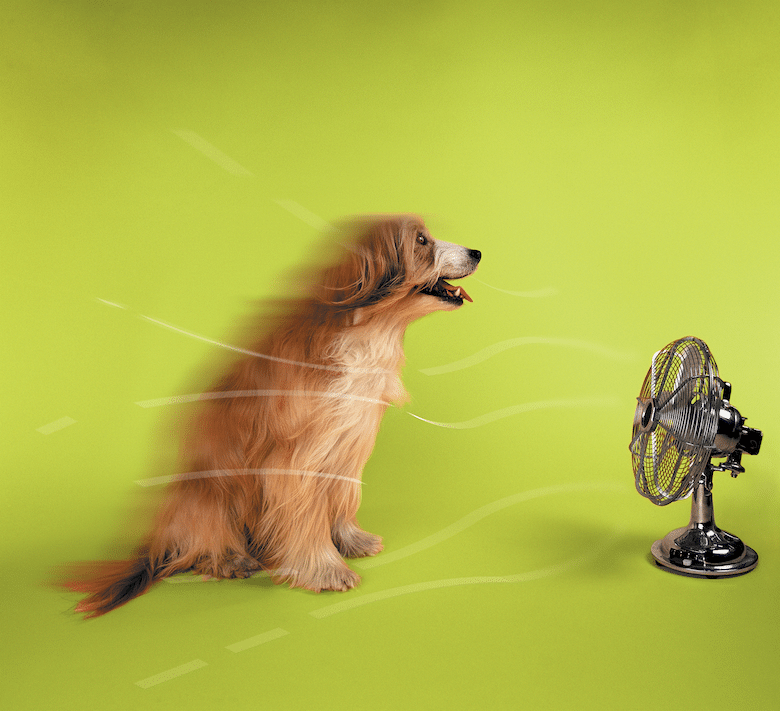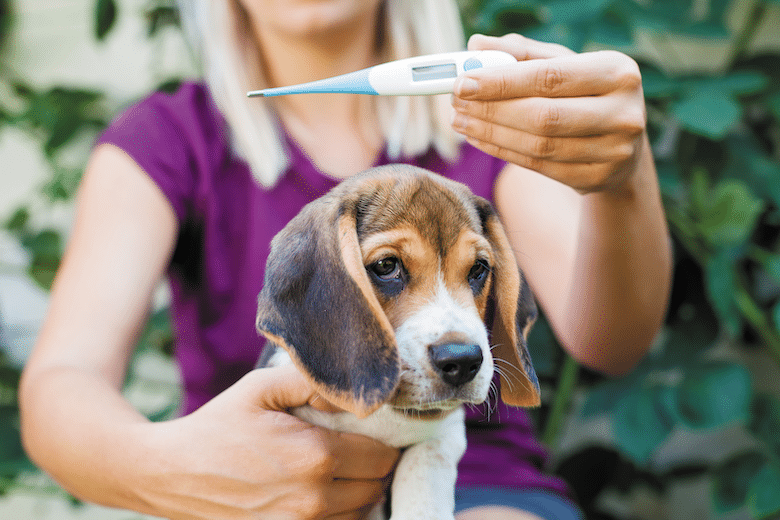The post Why Do Dogs Have a Higher Body Temperature? by Martha M. Everett appeared first on Dogster. Copying over entire articles infringes on copyright laws. You may not be aware of it, but all of these articles were assigned, contracted and paid for, so they aren't considered public domain. However, we appreciate that you like the article and would love it if you continued sharing just the first paragraph of an article, then linking out to the rest of the piece on Dogster.com.
Hot dogs aren’t just something you grill on the Fourth of July. The words can be quite literal when it comes to canine body temperature. Dogs run hotter than humans. A dog’s normal core body temperature ranges from 100 to 102.5 degrees Fahrenheit, compared with a human’s normal body temperature of around 98.6 degrees. Why do dogs have a higher body temperature?
“There isn’t a lot of scientific literature looking into the specific reasons why,” says Dr. Kelly Tart, associate professor at the University of Minnesota College of Veterinary Medicine in St. Paul. It’s believed that it has to do with the fact that dogs have a faster metabolism. “Because of the metabolism,” she says, “their hearts typically pump a little bit faster, they breathe a little bit faster, [and] a big thing is they age faster.”

Photo: Photodisc | Getty Image
Change is constant
Within that range, smaller dogs tend to have a higher body temperature than larger dogs, according to one study, and it’s believed that also is tied to metabolism (smaller beings have a faster metabolism). What’s more, within each individual dog, body temperature can fluctuate.
“There is no baseline for a dog — it can vary from day to day, morning to night,” says Dr. Tart, a diplomate of the American College of Veterinary Emergency and Critical Care. “They always are within that range, but not the same.”
Indeed, there appears to be a pattern to body temperature changes throughout the day: cooler in the morning, midpoint around noon and warmer in the evening.
Thermoregu-what?
Thermoregulatory behaviors help dogs regulate their body temperature. These innate brain mechanisms kick into high gear when body temperature declines (hypothermia) or rises (hyperthermia).
Related: Hypothermia in Dogs: Symptoms, Treatment and How to Prevent It
In extremely cold conditions, a dog can create or retain heat by curling into a ball and shivering, constricting blood vessels, temporarily slowing metabolism to conserve energy (known as torpor, a short-term form of hibernation) and raising his fur (called piloerection) to trap air as insulation.
In excessively hot conditions, a dog can cool himself by dissipating heat through panting, lying on a cool surface and dilating blood vessels.
“Their bodies are pretty good at keeping them within that temperature range,” Dr. Tart says.
Dogs also sweat through their paw pads, but that cooling method is not as efficient for dogs as it is for humans.
Related: Related: Frito Feet – Here’s Why Your Dog’s Paws Smell Like a Popular Corn Chip

Photo: Ocskaymark| Getty Images
Hot (and cold) dogs
Different factors can affect a dog’s ability to regulate body temperature. The following factors are some of the biggest:
✤ Breathing problems (a common concern for brachycephalic, or short-nosed, dogs such as the Boston Terrier)
✤ Weight (fat insulates, so too much or too little alters the body’s ability to shed or retain warmth)
✤ Age (very young and senior dogs)
✤ Poor health (particularly heart or thyroid disease)
✤ Coat and acclimation (fur holds heat, so a long-haired or thick-coated dog like an Alaskan Malamute needs to be properly acclimated to a hot region, just as a short-haired or hairless dog such as the Xoloitzcuintli should be acclimatized to a chilly climate)
✤ Size (small dogs lose heat more quickly)
✤ Color (dark colors absorb more heat)
Fever vs. temperature
In addition to environmental conditions, a dog’s temperature can stray outside the normal zone because of a health problem. When a dog has a fever (which is called pyrexia), that can signal a medical issue.
“The fever is the response, it’s not the disease,” Dr. Tart says. “It basically tells us that something is going on.”
An elevated temperature is a normal reaction to infection or inflammation. But pinpointing the source of a fever is tricky because there can be many causes. A feverish dog might not exhibit any other symptoms.
If your dog has a temperature above 102.5 degrees Fahrenheit (or below 100 degrees), call your veterinarian. Do not give your dog human medicine. “The medications that you and I would take when we have a fever, like acetaminophen or aspirin or ibuprofen, are all very toxic for pets,” Dr. Tart warns.
Keep your cool when it comes to your dog’s temperature. While a temperature of 102 seems high to us, for a dog, it’s nothing to get heated about. “If they are 100 one day and 102 the next day, it’s still normal,” Dr. Tart says, “and I wouldn’t worry about that.”
Top photograph: Lunja| Getty Images
The post Why Do Dogs Have a Higher Body Temperature? by Martha M. Everett appeared first on Dogster. Copying over entire articles infringes on copyright laws. You may not be aware of it, but all of these articles were assigned, contracted and paid for, so they aren't considered public domain. However, we appreciate that you like the article and would love it if you continued sharing just the first paragraph of an article, then linking out to the rest of the piece on Dogster.com.
Poop4U Blog
via www.Poop4U.com
Martha M. Everett, Khareem Sudlow


No comments: